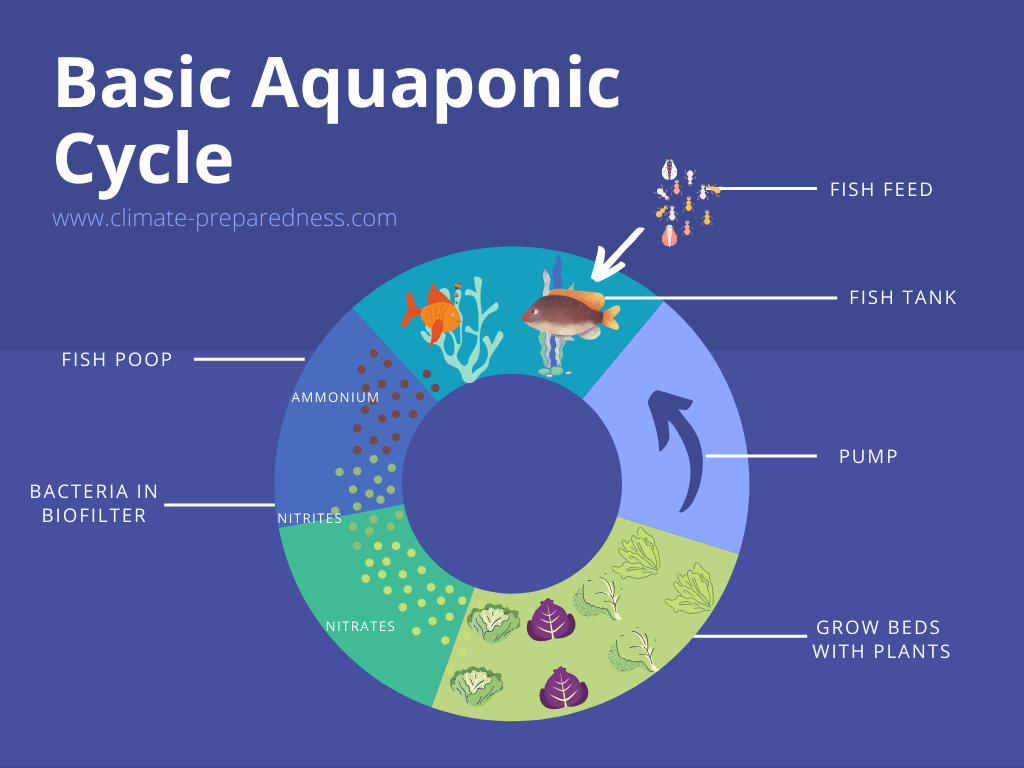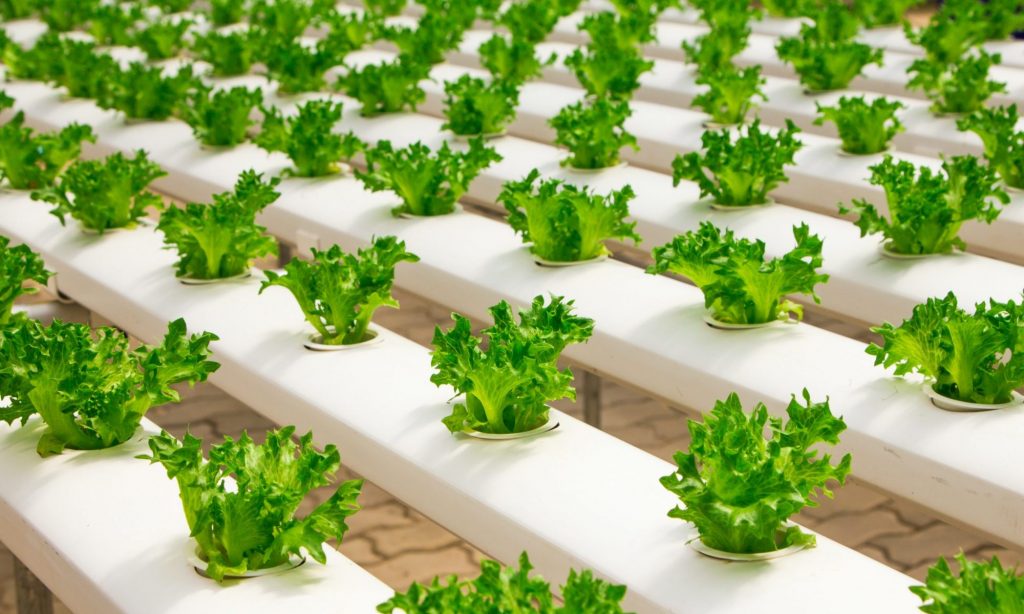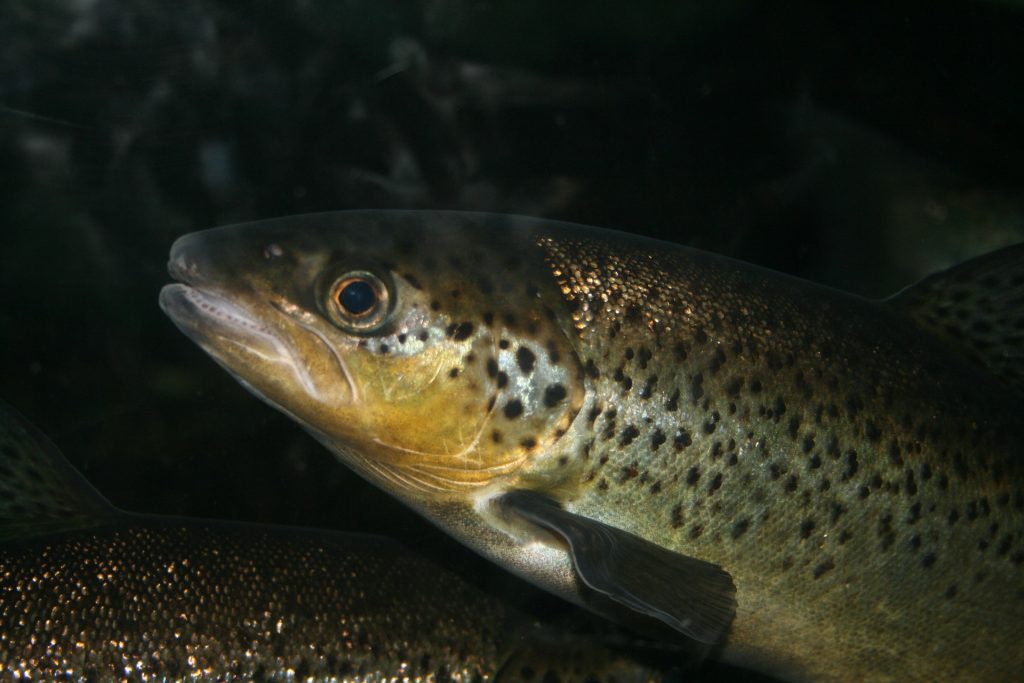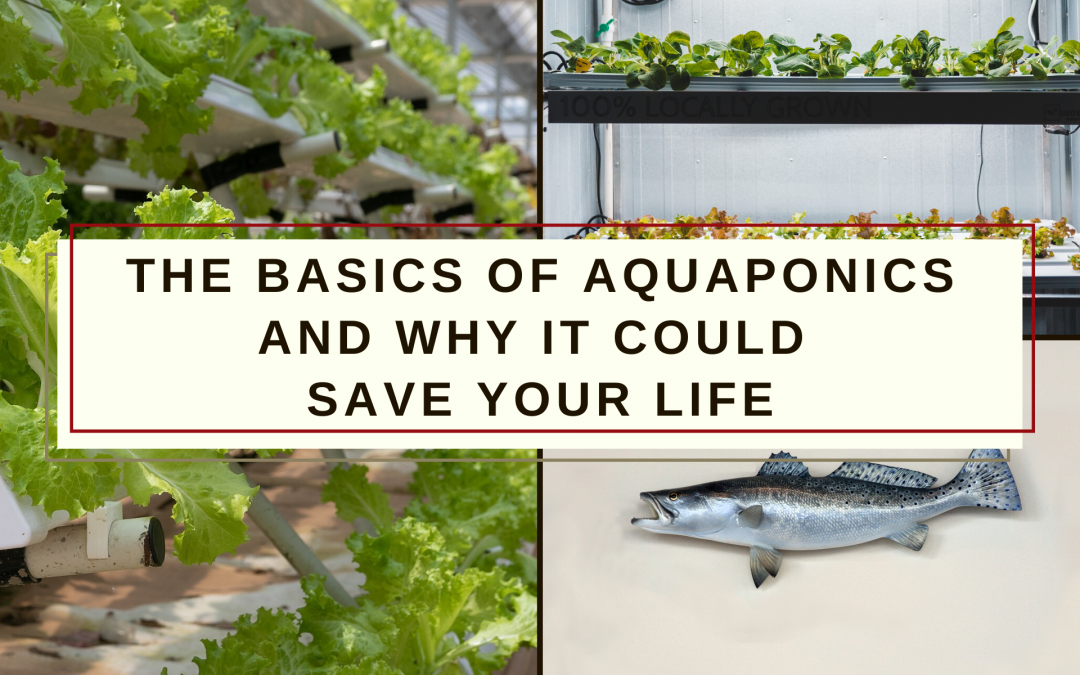Here at Climate Preparedness, we are all about finding ways to help us survive and thrive the many problems we will face due to climate change.
Food security is one of the main issues here because starvation is a very, very real problem. Wheat, rice, and corn feed the world. Unfortunately, those crops are very sensitive to adverse climate conditions, so large-scale crop failures are just a matter of time. If you are interested, you can read more about this in our post here.
Also, global distribution is very unequal which is why everyday people starve even though we produce a surplus of food.
I firmly believe that a large part of our global food production must be decentralized and transitioned to controlled environments.
Growing food conventionally outdoors will become impossible soon.
This is where Aquaponics come into play.
We previously listed Aquaponics as one of the Top 4 Future Food Sources and for good reasons.
In this post, I will cover the basics of what Aquaponics is, how it works, and some of the pros and cons.
As a beginner in this topic, this post will help you to understand what it’s all about.
What is Aquaponics?

Vertical hydroponic growing racks. Photo courtesy of https://www.freightfarms.com
Aquaponics is a combination of hydroponic gardening and aquaculture.
It sounds confusing, I know. Let me explain.
In a hydroponic system, food is grown not in soil but water. The plants float in nutrient-rich, circulating water. This has some significant advantages which I will talk about later.
It has one big catch though: The nutrients come from fertilizer which you need to supply constantly as a solvent.
Not exactly ideal for off-grid self-sufficiency.
The solution to this issue is to attach aquaculture, which makes it an aquaponic system.
So, how does it work?
Fish feces contain a lot of ammonium. This ammonium can be broken down first into nitrites and then into nitrates by helpful bacteria in your system.
Nitrates are exactly what plants need the most to grow. All you need to do is connect the aquaculture fish tank to the hydroponic grow beds. There, the plants will soak up the nitrates and other nutrients.
At the end of the grow beds you have a sump from which you pump the water back into the fish tank, creating a closed-loop system.
All you need to do is feed the fish and keep the pumps running.
You can feed them duckweed and insects and run the pumps on solar and batteries.
Sounds too good to be true, right?
Well, there is more to it of course. You have to find the right balance between fish and plants, keep an eye on different parameters in your system, and do some maintenance and cleaning work.
It’s not rocket science though and once you have a stable system the work involved is not larger than farming in soil.
Your crop yields will be, but more about that later!

What kind of plants can you grow?
There is a huge variety of plants you can grow in an aquaponic garden.
To take a closer look at those varieties we need to separate the plants into two categories.
Leafy Greens
Leafy Greens are plants that bear no fruits or vegetables. These include for example:
- Lettuces
- Kale
- Spinach
- Swiss Chard
- Basil
Leafy Greens are the easiest to grow because almost all they require to grow is nitrates. They are the best type of plants to grow for beginners and to get your system started.

Fruiting Plants
Fruiting plants need more nutrients than leafy greens. This means you will have to raise more fish and your system will become slightly larger and more complex.
Some popular fruiting plants that can be grown in an aquaponic system include:
- Tomatoes
- Peppers
- Broccoli
- Cauliflower
- Peas
- Beans
- Cabbages
- Cucumbers
- Squash
Not much left to be desired, right?
What Fish to use

Same as with plants, there is a large variety of fish you can use in your aquaponic system.
It is best to choose the type based on your climate and the kind of plants you want to grow.
Different fish have different requirements when it comes to water temperature and other parameters.
While the primary fish you choose doesn’t necessarily have to be an edible species, I highly recommend picking one that is.
Fish is an awesome source of protein and healthy fats. They are very precious to any self-sufficient homesteader and should be used!
There are other species of fish that are not usually eaten but can still be beneficial to your aquaponic system to convert different fodder or take care of pests or algae.
Some of the species commonly used include:
- Tilapia (warm climates)
- Rainbow Trout (cool climates)
- Catfish
- Crappie
- Koi
- Goldfish
Why Choose Aquaponics?
Above, I already mentioned some of the benefits of aquaponics over conventional growing in soil.
Let’s take a deeper look at the advantages to help secure your food supplies in the coming climate crisis.
Vertical Gardening
Growing plants in water instead of soil make vertical gardening possible.
In vertical gardening, the plants are fixed on top of each other in vertical racks or shelves.
The nutrient-rich water can flow down these racks and supply the plants’ root system.
Efficiency
There are a lot of different numbers out there when it comes to efficiency.
What yields per surface area can you realistically expect from aquaponics compared to conventional agriculture?
An efficiency ratio of 25:1 is realistic with vertical gardening.
That means you can grow in 10 square meters what would usually take up 250 square meters.
It also requires far less water because it’s a closed-loop system. You only need to replace evaporated water.
This is awesome because you can grow more food, sustain more livestock while at the same time reducing the impact on your environment.
Controlled Environment

Grow-lights enable growing year-round. Photo courtesy of https://www.freightfarms.com
Droughts, flash floods, pests, and heatwaves are just a few of the bad things we have to prepare for in the future. This will make conventional growing outdoors largely impossible.
Aquaponic gardens can be built in controlled environments indoors. With the help of air-conditioning and artificial grow-lights, food can be grown year-round, anywhere in the world.
There are already great concepts out there for vertical gardens in air-conditioned shipping containers. You can check some of them out here at Freightfarms.com.
Versatility
The fact that soil is no longer a requirement to grow food offers a whole bunch of new opportunities.
Vertical indoor gardens using hydroponic or aquaponic systems can be built in the middle of urban areas or cities. Why not repurpose old warehouses or factories into gardens?
This could provide jobs and help with supplying urban areas with regional food in the future, taking some of the pressure off the supply chain.
Pro’s and Con’s
Let’s sum up some of the pros and cons of aquaponic farming.
+ |
– |
| Provides greens as well as fish | The system needs to be well balanced and parameters checked |
| Efficient ratio of yields per surface area | Requires electricity for pumps and A/C |
| Vertical gardening for further increase in efficiency | Expensive investment (housing, containers, pumping and solar / wind + battery for self-sufficiency) |
| Growing in water reduces the risk of pests | Some plants are harder to grow than others |
| Climate-controlled environment allows growing food independent of climate | Fish need to be fed |
| Little water consumption (closed-loop system) | |
| Low maintenance |
I think this overview covered most of the basics and hopefully got you more interested in the topic.
Aquaponics is something we will certainly delve into more deeply in the future!
So make sure to come back, follow us on Facebook and YouTube!


The advantage of growing hydroponically or with aquaponics is how fast the stuff can grow. You can grow foodf for 10 to 16 hours and get food ready for table faster than with outdoor growing! A huge advantage over outdoor growing, especially for survival gardening! That means you can overlap your crop so you have a constant supply year round!
Outdoors you have variable day length depending on cloudy days and season. Inside it can be optimally set for the age of the plant, and lights varied for bloom growth as oppossed to leaf growth!
Also just a note on fish. Their urine has nitrogen, and their poop has some phosphates. Only a little bit of potassium and Epsom salt need be added monthly, reducing chemical fertilizer need down to a very small amounts a year! (Spelling correctiom)
Good points Liz! The one major catch is that you need electricity to run the pumps (and A/C and grow-lights if you want to grow year-round). This is why you should always diversify your sources of food. Some plants grown in raised beds as well as livestock are a good idea in my opinion.